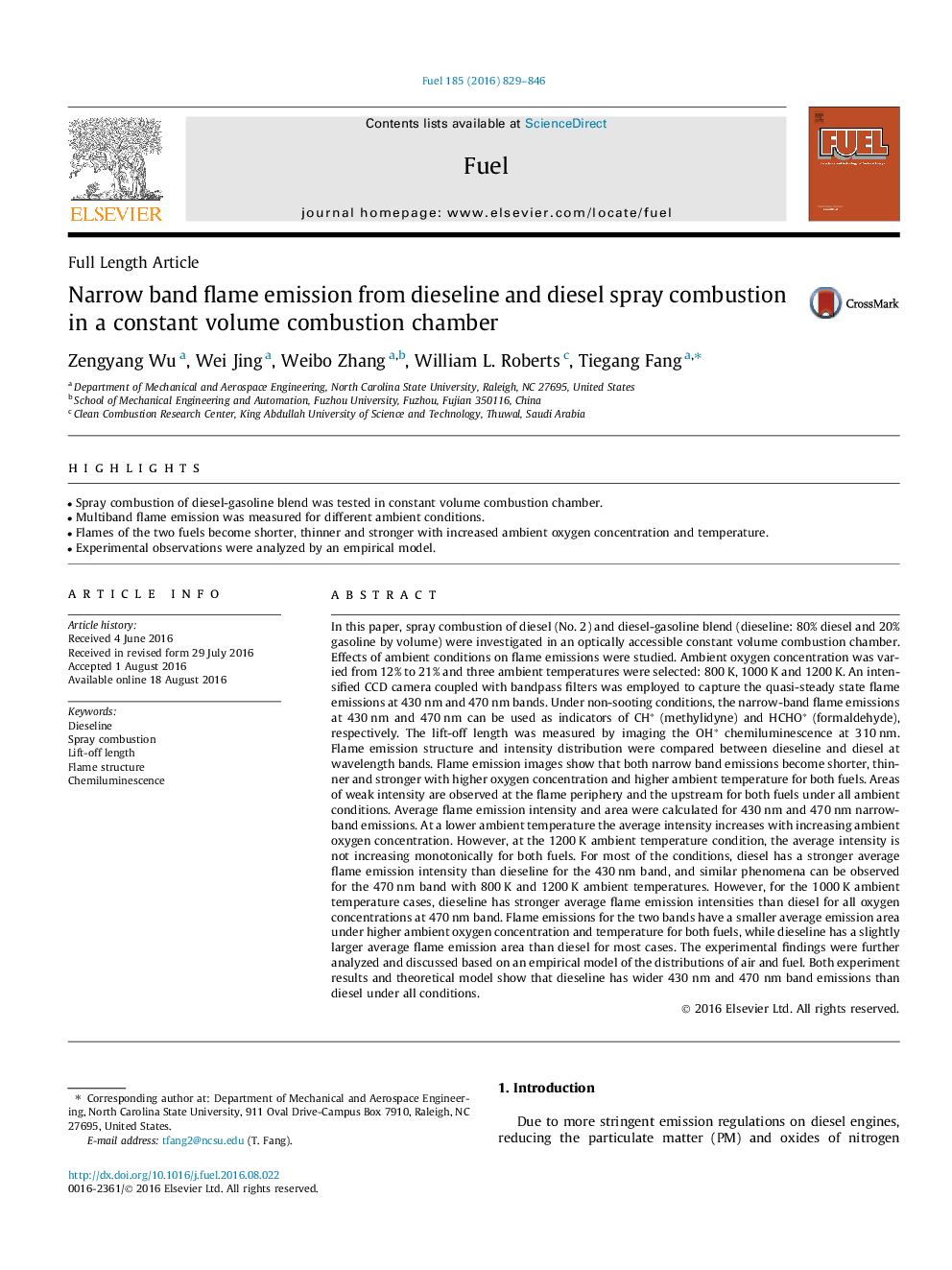| کد مقاله | کد نشریه | سال انتشار | مقاله انگلیسی | نسخه تمام متن |
|---|---|---|---|---|
| 6632894 | 461088 | 2016 | 18 صفحه PDF | دانلود رایگان |
عنوان انگلیسی مقاله ISI
Narrow band flame emission from dieseline and diesel spray combustion in a constant volume combustion chamber
ترجمه فارسی عنوان
انتشار شعله باریک از احتراق اسپری دیزلین و دیزلی در یک اتاق احتراق حجم ثابت
دانلود مقاله + سفارش ترجمه
دانلود مقاله ISI انگلیسی
رایگان برای ایرانیان
کلمات کلیدی
موضوعات مرتبط
مهندسی و علوم پایه
مهندسی شیمی
مهندسی شیمی (عمومی)
چکیده انگلیسی
In this paper, spray combustion of diesel (No. 2) and diesel-gasoline blend (dieseline: 80% diesel and 20% gasoline by volume) were investigated in an optically accessible constant volume combustion chamber. Effects of ambient conditions on flame emissions were studied. Ambient oxygen concentration was varied from 12% to 21% and three ambient temperatures were selected: 800Â K, 1000Â K and 1200Â K. An intensified CCD camera coupled with bandpass filters was employed to capture the quasi-steady state flame emissions at 430Â nm and 470Â nm bands. Under non-sooting conditions, the narrow-band flame emissions at 430Â nm and 470Â nm can be used as indicators of CHâ (methylidyne) and HCHOâ (formaldehyde), respectively. The lift-off length was measured by imaging the OHâ chemiluminescence at 310Â nm. Flame emission structure and intensity distribution were compared between dieseline and diesel at wavelength bands. Flame emission images show that both narrow band emissions become shorter, thinner and stronger with higher oxygen concentration and higher ambient temperature for both fuels. Areas of weak intensity are observed at the flame periphery and the upstream for both fuels under all ambient conditions. Average flame emission intensity and area were calculated for 430Â nm and 470Â nm narrow-band emissions. At a lower ambient temperature the average intensity increases with increasing ambient oxygen concentration. However, at the 1200Â K ambient temperature condition, the average intensity is not increasing monotonically for both fuels. For most of the conditions, diesel has a stronger average flame emission intensity than dieseline for the 430Â nm band, and similar phenomena can be observed for the 470Â nm band with 800Â K and 1200Â K ambient temperatures. However, for the 1000Â K ambient temperature cases, dieseline has stronger average flame emission intensities than diesel for all oxygen concentrations at 470Â nm band. Flame emissions for the two bands have a smaller average emission area under higher ambient oxygen concentration and temperature for both fuels, while dieseline has a slightly larger average flame emission area than diesel for most cases. The experimental findings were further analyzed and discussed based on an empirical model of the distributions of air and fuel. Both experiment results and theoretical model show that dieseline has wider 430 nm and 470 nm band emissions than diesel under all conditions.
ناشر
Database: Elsevier - ScienceDirect (ساینس دایرکت)
Journal: Fuel - Volume 185, 1 December 2016, Pages 829-846
Journal: Fuel - Volume 185, 1 December 2016, Pages 829-846
نویسندگان
Zengyang Wu, Wei Jing, Weibo Zhang, William L. Roberts, Tiegang Fang,
